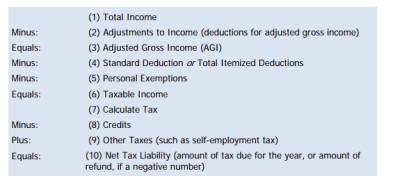Content

As a result, a demand curve with constant unitary elasticity has a steeper slope on the left and a flatter slope on the right—and a curved shape overall. The income elasticity of demand, in diagrammatic terms, is a percentage measure of how far the demand curve shifts in response to a change in income. Suppose the demand curve is initially the one defined by D, and then income increases. In this example the supply curve is horizontal at the price P0.
He is a professor of economics and has raised more than $4.5 billion in investment capital. But many consumers—particularly millennials and Gen Z—prioritize sustainability and seek cruelty-free, ethically produced goods. Luxury designers like Alexander McQueen and Balenciaga have even adapted fur-free policies because of this shift toward sustainability. Artisanal items, like a handmade leather wallet, may be considered luxurious along with items bearing the logo of a designer whose items are not sold everywhere. Economists consider elasticity with a numerical value less than 1 to be inelastic. In economics goods are classified into three categories, namely, necessities , comforts, and luxuries.
Recommended Articles
Necessity– If the product is a basic need, people will be willing to pay a higher price for the product. For example, gas, even if gas doubles, you will still have to fill up your tank to get to the office daily. A Veblen good is a superior good with a prestige value so high that a price decline might lower demand. The luxury goods market has been on an upward climb for many years. Apart from the setback caused by the 1997 Asian Financial Crisis, the industry has performed well, particularly in 2000. In that year, the world luxury goods market was worth close to $170 billion and grew 7.9 percent.
In the long term, consumers are more elastic over longer periods, as over the long term after a price increase of a good, they will find acceptable and less costly substitutes. Hence, the company experienced elastic demand since Ed˃1, signifying the change in demand is higher than the change in the price of LED TVs. Many coffee shops have developed branded drinks and specialized experiences in order to reduce Do luxury goods have elastic demand? substitutes and build customer loyalty. While black coffee is available almost universally, there are few substitutes for a Starbucks Java Chip Frappuccino. The demand for gasoline generally is fairly inelastic, especially in the short run. The substitutes for car travel offer less convenience and control. Much car travel is necessary for people to move between activities and can’t be reduced to save money.
Resource of the Week – AQA and Edexcel A Level Business
Let’s study the differences based on definition, types of commodities, time frame, substitutes, and impact on pricing and profit. At the outset of the COVID-19 pandemic the demand for face masks increased markedly around the globe resulting in retailers. According to data released by Grecques Consulting Pty, an international research firm based in the US, face masks sales grew by a year-on-year increase of 400% in April 2020. However, in December of 2020, the price of face masks retraced back to its pre- COVID-19 level.
Demand for both luxury and normal goods increases as consumers gain wealth. But demand for inferior goods—like a less expensive brand of processed food—drops as a person acquires more wealth because they can afford better options. Because of this, inferior goods are said to have negative https://business-accounting.net/ income elasticity. A Constant Unitary Elasticity Supply Curve A constant unitary elasticity supply curve is a straight line reaching up from the origin. Between each pair of points, the percentage increase in quantity supplied is the same as the percentage increase in price.
Module: Elasticity
Coffee is generally widely available at a level of quality that meets the needs of most buyers. The combination of a low price, relative to the buyer’s spending power, and the fact that the product is sold by many different suppliers in a competitive market, make the demand highly elastic. The price elasticity of demand can be measured by dividing the percentage change in the quantity of the demand by the percentage change in the price of the product. Originally, luxury goods were available only to the very wealthy and “aristocratic world of old money” that offered them a history of tradition, superior quality, along with a pampered buying experience. In economics, a luxury good is a good for which demand increases more than what is proportional as income rises, so that expenditures on the good become a greater proportion of overall spending. Luxury goods are in contrast to necessity goods, where demand increases proportionally less than income.
- Economists divide goods into two groups based on signs of income elasticity.When an item has a positive income elasticity, it is a normal good.Whereas, when the elasticity is negative, it is an inferior good.
- Demand is said to be inelastic where PED is less than one, whereas it is said to be elastic where PED is greater than one.
- The demand for gasoline generally is fairly inelastic, especially in the short run.
- The elasticity and inelasticity of demand determine how the demand for a product responds to the change in any economic factor such as its price.
- When close substitutes are available, the quantity demanded is highly sensitive to changes in the price level and vice versa.
